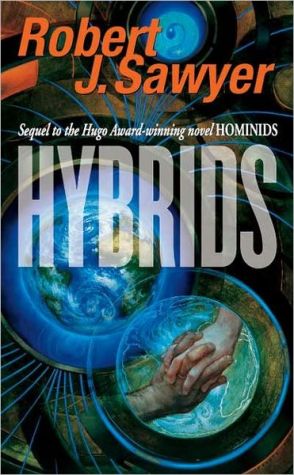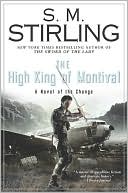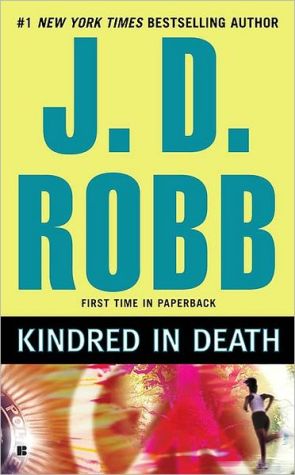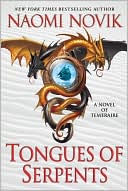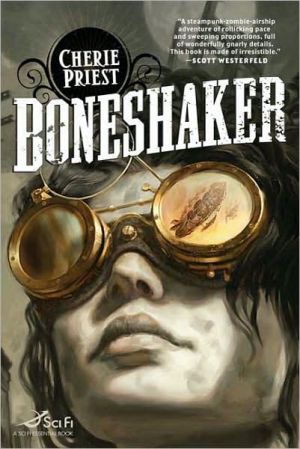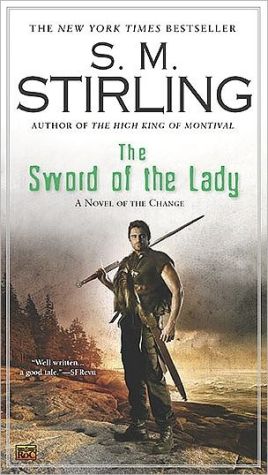Hybrids (Neanderthal Parallax Series #3)
In Hominids, author Robert J. Sawyer introduced a character readers will never forget: Ponter Boddit, a Neanderthal physicist from a parallel Earth who was whisked from his reality into ours by a quantum-computing experiment gone awry - making him the ultimate stranger in a strange land.\ Now, in Hybrids, Ponter Boddit and his Homo sapiens lover, geneticist Mary Vaughan, are torn between two worlds, struggling to find a way to make their star-crossed relationship work. Aided by banned...
Search in google:
"The genre's northern star-in fact, one of the hottest SF writers anywhere."-Maclean's Magazine"Hi-tech Neanderthals from a parallel continuum, with a social system like none we ever heard of. Can two very different people bridge that gap? While our world begins changes we can only try to understand. In Humans, Sawyer gives us a rich mix of mind-stretching concepts and personal crises."--F. M. Busby"Sawyer has carried the banner of Asimovian science-fiction into the twenty-first century. Hominids is based in cutting-edge contemporary science--paleoanthropology, quantum computing, neutrino astronomy, among others--and furnished at the same time with touching human (and parahuman) stories. Precise, detailed, and accomplished. The next volume is eagerly anticipated."-- Robert Charles WilsonIn Hominids, Nebula Award-winning author Robert J. Sawyer introduced a character readers will never forget: Ponter Boddit, a Neanderthal physicist from a parallel Earth who was whisked from his reality into ours by a quantum-computing experiment gone awry-making him the ultimate stranger in a strange land.In that book and in its sequel, Humans, Sawyer showed us the Neanderthal version of Earth in loving detail-a tour de force of world-building; a masterpiece of alternate history.Now, in Hybrids, Ponter Boddit and his Homo sapien lover, geneticist Mary Vaughan, are torn between two worlds, struggling to find a way to make their star-crossed relationship work. Aided by banned Neanderthal technology, they plan to conceive the first hybrid child, a symbol of hope for the joining of their two versions of reality. But after an experiment shows that Mary's religious faith--something completely absent in Neanderthals - is a quirk of the neurological wiring of Homo sapiens' brains, Ponter and Mary must decide whether their child should be predisposed to atheism or belief. Meanwhile, as Mary's Earth is dealing with a collapse of its planetary magnetic field, her boss, the enigmatic Jock Krieger, has turned envious eyes on the unspoiled Eden that is the Neanderthal world . . . .Hybrids is filled to bursting with Sawyer's signature speculations about alternative ways of being human, exploding our preconceptions of morality and gender, of faith and love. His Neanderthal Parallax trilogy is a classic in the making, and here he brings it to a stunning, thought-provoking conclusion that's sure to make Hybrids one of the most controversial books of the year."Robert Sawyer hits another SF homerun with Hominids: an utterly intriguing conceptual seed, state-of-the-scientific-arts theory, challenging social consciousness, and characters you want to take home for dinner." --Jane FancherPublishers WeeklyCanadian writer Sawyer brings his Neanderthal Parallax trilogy to a close, leaving some loose ends that beg for a follow-up further exploring the interaction of two parallel worlds: the overcrowded and polluted one we're used to and another inhabited by highly intelligent and civilized Neanderthals. In the earlier books (Hominids and Humans), physicist Ponter Boddit got translated from the Neanderthal world to ours, where he fell in love with geneticist Mary Vaughn. The couple joined with people of good will from both worlds to keep the link open. Now, though, it's time to consider the implications of such a continuing connection. If people have trouble getting along because of such distinctions as sex and race, how will they be able to co-exist with members of another species? Some individuals see anyone different as a rival, a threat that must be destroyed. Others coldly calculate how to seize new territory for "humanity." Sawyer's characters are less interesting for who they are than for what they are-or what they represent. Still, his picture of the unspoiled Neanderthal world is charming, and he raises some provocative questions. If, for example, only Earth-humans have brains capable of religious belief, should Ponter and Mary genetically design their child with that ability or not? It all amounts to some of the most outrageous, stimulating speculation since Robert A. Heinlein's Stranger in a Strange Land questioned our tired, timid conventions. (Sept. 4) Copyright 2003 Reed Business Information.
Chapter One\ "My fellow Americans—and all other human beings on this version of Earth—it gives me great pleasure to address you this evening, my first major speech as your new president. I wish to talk about the future of our kind of hominid, of the species known as Homo sapiens: people of wisdom…"\ "Mare," said Ponter Boddit, "it is my honor to introduce you to Lonwis Trob."\ Mary was used to thinking of Neanderthals as robust—"Squat Schwarzeneggers" was the phrase the Toronto Star had coined, referring to their short stature and massive musculature. So it was quite a shock to behold Lonwis Trob, especially since he was now standing next to Ponter Boddit.\ Ponter was a member of what the Neanderthals called "generation 145," meaning he was thirty-eight years old. He stood about five-eight, making him on the tall side for a male of his kind, and he had muscles most bodybuilders would envy.\ But Lonwis Trob was one of the very few surviving members of generation 138, and that made him a staggering one hundred and eight years old. He was scrawny, although still broad-shouldered. All Neanderthals had light skin—they were a northern-adapted people—but Lonwis's was virtually transparent, as was what little body hair he had. And although his head showed all the standard Neanderthal traits—low forehead; doubly arched browridge; massive nose; square, chinless jaw—it was completely devoid of hair. Ponter, by comparison, had lots of blond hair (parted in the center, like most Neanderthals) and a full blond beard.\ Still, the eyes were the most arresting features of the two Neanderthals now facing Mary Vaughan. Ponter's irises were golden; Mary had found she could stare into them endlessly. And Lonwis's irises were segmented, mechanical: his eyeballs were polished spheres of blue metal, with a blue-green glow emanating from behind the central lenses.\ "Healthy day, Scholar Trob," said Mary. She didn't take his hand; that wasn't a Neanderthal custom. "It's an honor to meet you."\ "No doubt it is," said Lonwis. Of course, he was speaking in the Neanderthal tongue—there was only one, so the language had no name—but his Companion implant was translating what he said, pumping synthesized English words out of its external speaker.\ And what a Companion it was! Mary knew that Lonwis Trob had invented this technology when he was a young man, back in the year Mary's people had known as 1923. In honor of all that the Companions had done for the Neanderthals, Lonwis had been presented with one that had a solid-gold faceplate. It was installed on the inside of his left forearm; there were few Neanderthal southpaws. In contrast, Ponter's Companion, named Hak, had a plain steel faceplate; it looked positively chintzy in comparison.\ "Mare is a geneticist," said Ponter. "She is the one who proved during my first visit to this version of Earth that I was genetically what they call a Neanderthal." He reached over and took Mary's small hand in his own, massive, shortfingered one. "More than that, though, she is the woman I love. We intend to bond shortly."\ Lonwis's mechanical eyes fell on Mary, their expression impossible to read. Mary found herself turning to look out the window of her office, here on the second floor of the old mansion that housed Synergy Group headquarters in Rochester, New York. The gray bulk of Lake Ontario spread to the horizon. "Well," said Lonwis, or at least that was how his gold Companion translated the sharp syllable he uttered. But then his tone lightened and his gaze shifted to Ponter. "And I thought I was doing a lot for cross-cultural contact."\ Lonwis was one of ten highly distinguished Neanderthals—great scientists, gifted artists—who had marched through the portal from their world to this one, preventing the Neanderthal government from severing the link between the two realities.\ "I want to thank you for that," said Mary. "We all do—all of us here at Synergy. To come to an alien world—"\ "Was the last thing I thought I would be doing at my age," said Lonwis. "But those short-headed fools on the High Gray Council!" He shook his ancient head in disgust.\ "Scholar Trob is going to work with Lou," said Ponter, "on seeing if a quantum computer, like the one Adikor and I built, can be made using equipment that exists—how do you phrase it?—'off the shelf' here."\ "Lou" was Dr. Louise Benoît, by training a particle physicist; Neanderthals couldn't pronounce the long ee phoneme, although their Companions supplied it as necessary when translating Neanderthal words into English.\ Louise had saved Ponter's life when he'd first arrived here, months ago, accidentally transferred from his own subterranean quantum-computing chamber into the corresponding location on this version of Earth—which happened to be smack-dab in the middle of the heavy-water containment sphere at the Sudbury Neutrino Observatory, where Louise had then been working.\ Because she'd been quarantined with Ponter and Mary, as well as physician Reuben Montego, when Ponter had fallen sick during his initial visit, Louise had had a chance to learn all about Neanderthal quantum computing from Ponter, making her the natural choice to head the replication effort here. And that effort was a high priority, since sufficiently large quantum computers were the key to bridging between universes.\ "And when will I get to meet Scholar Benoît?" asked Lonwis.\ "Right now," said an accented female voice. Mary turned. Louise Benoît—beautiful, brunette, twenty-eight, all legs and white teeth and perfect curves—was standing in the doorway. "Sorry to be late. Traffic was murder."\ Lonwis tipped his ancient head, obviously listening to his Companion's translation of those last three words, but, just as obviously, completely baffled by them.\ Louise came into the room, and she did extend her pale hand. "Hello, Scholar Trob!" she said. "It's a pleasure to meet you."\ Ponter leaned close to Lonwis and whispered something to him. Lonwis's brow undulated—it was a weird sight when a Neanderthal who still had eyebrow hair did it; it was downright surreal, Mary thought, when this centenarian did it. But he reached out and took Louise's hand, grasping it as though he were picking up a distasteful object.\ Louise smiled that radiant smile of hers, although it seemed to have no effect on Lonwis. "This is a real honor," she said. She looked at Mary. "I haven't been this excited since I met Hawking!" Stephen Hawking had taken a tour of the Sudbury Neutrino Observatory—quite the logistics exercise, given that the detector chamber was located two kilometers underground, and 1.2 kilometers horizontally along a mining drift from the nearest elevator.\ "My time is extremely valuable," said Lonwis. "Can we get to work?"\ "Of course," said Louise, still smiling. "Our lab is down the hall."\ Louise started walking, and Lonwis followed. Ponter moved close to Mary and gave her face an affectionate lick, but Lonwis spoke up without looking back. "Come along, Boddit."\ Ponter smiled ruefully at Mary, gave a what-can-you-do shrug of his massive shoulders, and followed Louise and the great inventor, closing the heavy, dark wooden door behind himself.\ Mary walked over to her desk and started sorting the mess of papers on it. She used to be—what? Nervous? Jealous? She wasn't sure, but certainly it had originally made her uneasy when Ponter spent time with Louise Benoît. After all, as Mary had discovered, the male Homo sapiens here at Synergy often referred to Louise behind her back as "LL." Mary had finally asked Frank, one of the imaging guys, what that meant. He'd been embarrassed, but had ultimately revealed it stood for "Luscious Louise." And Mary had to admit Louise was just that.\ But it no longer bothered Mary when Ponter was with Louise. After all, it was Mary, not the French-Canadian, that the Neanderthal loved, and big boobs and full lips didn't seem to be high on the Barast list of favored traits.\ A moment later there was a knock on her door. Mary looked up. "Come in," she called.\ The door swung open, revealing Jock Krieger, tall, thin, with a gray pompadour that always made Mary think of Ronald Reagan. She wasn't alone in that; Jock's secret nickname among the same people who called Louise "LL" was "the Gipper." Mary supposed they had a name for her, too, but she'd yet to overhear it.\ "Hi, Mary," said Jock in his deep, rough voice. "Do you have a moment?"\ Mary blew out air. "I've got lots of them," she said.\ Jock nodded. "That's what I've been meaning to talk to you about." He came in and helped himself to a chair. "You've finished the work I hired you to do here: find an infallible method for distinguishing a Neanderthal from one of us." Indeed she had—and it had turned out to be pigsimple: Homo sapiens had twenty-three pairs of chromosomes, while Homo neanderthalensis had twenty-four.\ Mary felt her pulse accelerating. She'd known this dream job, with its hefty consulting fee, was too good to last. "A victim of my own genius," she said, trying to make a joke of it. "But, you know, I can't go back to York University—not this academic year. A couple of sessional instructors"—one of whom is an absolute bloody monster—"have taken over my course work."\ Jock raised a hand. "Oh, I don't want you to go back to York. But I do want you to leave here. Ponter's heading home soon, isn't he?"\ Mary nodded. "He only came over to attend some meetings at the UN, and, of course, to bring Lonwis up here to Rochester."\ "Well, why don't you accompany him when he goes back? The Neanderthals are being very generous about sharing what they know about genetics and biotechnology, but there's always more to learn. I'd like you to make an extended trip to the Neanderthal world—maybe a month—and learn as much as you can about their biotechnology."\ Mary felt her heart pounding with excitement. "I'd love to do that."\ "Good. I'm not sure what you'll do about living arrangements over there, but…"\ "I've been staying with Ponter's man-mate's woman-mate."\ "Ponter's man-mate's woman-mate…" repeated Jock.\ "That's right. Ponter is bonded to a man named Adikor—you know, the guy who co-created their quantum computer with him. Adikor, meanwhile, is simultaneously bonded to a woman, a chemist named Lurt. And when Two aren't One—when the male and female Neanderthals are living separate lives—it's Lurt that I stay with."\ "Ah," said Jock, shaking his head. "And I thought the Y&R had confusing family relationships."\ "Oh, those are easy," said Mary with a smile. "Jack Abbott used to be married to Nikki, who was born Nikki Reed. That was after she was married to Victor Newman—for the first two times, that is, but before the third time. But now Jack is married to…"\ Jock held up a hand. "Okay, okay!"\ "Anyway, like I said, Ponter's man-mate's woman-mate is a chemist named Lurt—and the Neanderthals consider genetics to be a branch of chemistry, which, of course, it really is, if you think about it. So she'll be able to introduce me to all the right people."\ "Excellent. If you're willing to head over to the other side, we could certainly use this information."\ "Willing?" said Mary, trying to contain her excitement. "Is the Pope Catholic?"\ "Last time I checked," said Jock with a small smile.\ Copyright © 2003 by Robert J. Sawyer
\ From Barnes & NobleThe Barnes & Noble Review\ Hybrids is the dramatic conclusion to Robert J. Sawyer's Neanderthal Parallax trilogy (following Hominids and Humans), a saga with a bold premise: 40,000 years ago, the universe split into two parallel timelines, one where civilization evolved to where it is today (overpopulation, global warming, nuclear warfare, terrorism, Burger King, etc.) and another where the Neanderthals weren't displaced by the Cro-Magnons and survived to the present day with their own unique culture and technology. On this planet, where Homo sapiens never existed, the Neanderthals live in a highly advanced, peaceful, idyllic world with hardly any crime, disease, or pollution. \ The first two novels chronicle the very first interactions between worlds -- and species -- when a an experiment goes awry and a portal is accidentally opened by a Barast (Neanderthal) quantum physicist, Ponter Boddit. In Hybrids, strong interpersonal relationships have formed between Gliksins (Homo sapiens) and Barasts. In fact, Ponter and geneticist Mary Vaughan have fallen in love and are trying to have a hybrid baby. More and more, Gliksins and Barasts are visiting each other's worlds. Technologies and ideas are being exchanged. But then the ugly side of humanity rears its head.\ Like some of Sawyer's previous works (Factoring Humanity and Calculating God), Hybrids (and the entire Neanderthal Parallax trilogy, for that matter) is fodder for hours of lively debate. Just how advanced is humankind? Does God really exist? How tenable is organized religion when viewed through the eyes of an alien, intelligent species? Morality, gender issues, politics, faith, and genetic engineering -- nothing is off limits in this fantastic, thought-provoking trilogy. Paul Goat Allen\ \ \ \ \ \ Booklist"A fine combination of love story, social commentary, and ecothriller closes a terrific series with a bang."[Starred Review]\ \ \ SF Weekly"Sawyer fashions a consistent, engaging, logical history and society for his Neanderthals. . . . All in all, it's an anthropological creation worthy of Le Guin.\ \ \ \ \ Publishers WeeklyCanadian writer Sawyer brings his Neanderthal Parallax trilogy to a close, leaving some loose ends that beg for a follow-up further exploring the interaction of two parallel worlds: the overcrowded and polluted one we're used to and another inhabited by highly intelligent and civilized Neanderthals. In the earlier books (Hominids and Humans), physicist Ponter Boddit got translated from the Neanderthal world to ours, where he fell in love with geneticist Mary Vaughn. The couple joined with people of good will from both worlds to keep the link open. Now, though, it's time to consider the implications of such a continuing connection. If people have trouble getting along because of such distinctions as sex and race, how will they be able to co-exist with members of another species? Some individuals see anyone different as a rival, a threat that must be destroyed. Others coldly calculate how to seize new territory for "humanity." Sawyer's characters are less interesting for who they are than for what they are-or what they represent. Still, his picture of the unspoiled Neanderthal world is charming, and he raises some provocative questions. If, for example, only Earth-humans have brains capable of religious belief, should Ponter and Mary genetically design their child with that ability or not? It all amounts to some of the most outrageous, stimulating speculation since Robert A. Heinlein's Stranger in a Strange Land questioned our tired, timid conventions. (Sept. 4) Copyright 2003 Reed Business Information.\ \ \ \ \ From the Publisher“A rapidly plotted, anthropologically saturated speculative novel…[with] Sawyer-signature wide appeal.”\ —The Globe & Mail on Hominids\ “A fine combination of love story, social commentary, and ecothriller closes a terrific series with a bang.”\ —Booklist, starred review on Hybrids\ “Science fiction has a long tradition of stories examining our hominid cousins…. But few such works exhibit the degree of serious research and fertile inventiveness that Sawyer brings to his trilogy.… All in all, it's an anthropological creation worthy of Le Guin.”\ —SciFi Weekly on Hybrids\ \ \
